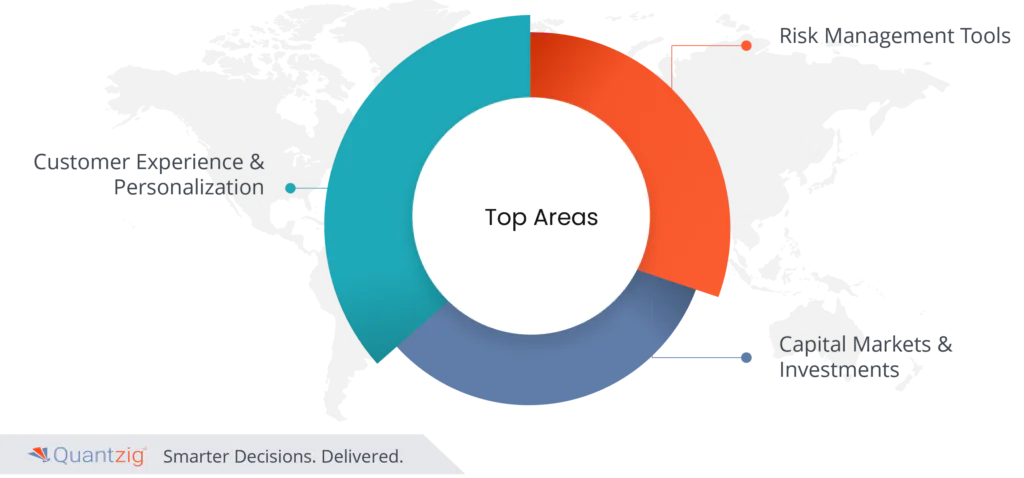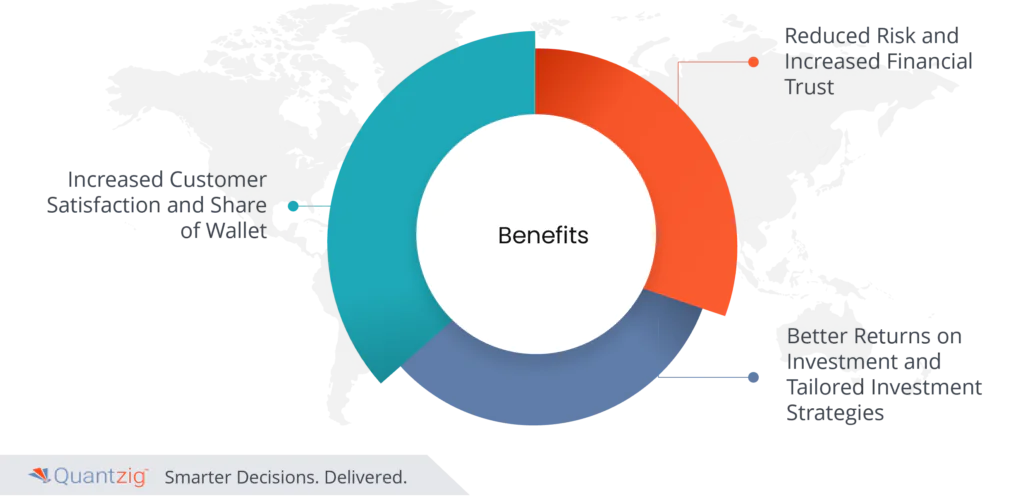Written By: Sudeshna Ghosh
In the ever-evolving landscape of banking and finance, the integration of Artificial Intelligence (AI)-driven automation stands as a transformative force. This article delves into the groundbreaking ways AI is revolutionizing traditional banking practices, reshaping financial services, and fostering unparalleled efficiency. AI’s capabilities in automating routine tasks, processing vast amounts of data, and providing predictive insights are reshaping customer interactions, risk management, and decision-making processes. As financial institutions increasingly embrace AI, the sector experiences a paradigm shift toward streamlined operations, enhanced customer experiences, and data-driven innovations.
Join us on a journey through the forefront of technology, where AI-driven automation is reshaping the financial landscape and setting new standards for agility, precision, and customer-centricity.
Table of Contents
Overview
AI is reshaping the banking and finance landscape by introducing novel and personalized experiences through tailored offerings and AI-assisted customer support tools. Chatbots and financial tools driven by AI not only streamline customer interactions but also contribute to targeted marketing efforts, elevating customer satisfaction and retention rates.
One of AI’s remarkable contributions is its ability to rapidly analyze millions of transactions, identifying fraudulent, erratic, and suspicious activities in real time. This capability extends beyond individual institutions, fostering collaboration between banks to collectively manage risks and share actionable intelligence with stakeholders, including customers. AI emerges as a pivotal tool in fortifying the financial sector’s defenses against emerging threats, promoting a collaborative and proactive approach to risk management.
Furthermore, the contemporary financial landscape witnesses the integration of AI-assisted investment platforms and algorithmic investment solutions. These technologies empower investors with data-driven, real-time investment strategies that surpass the possibilities of manual planning. The result is a paradigm shift in investment approaches, where AI-driven solutions offer unparalleled precision and responsiveness, adapting swiftly to dynamic market conditions.
Top Areas
In the realm of banking and finance, AI-driven automation is making profound strides across three key areas, revolutionizing the industry.

1.Customer Experience & Personalization:
AI is at the forefront of transforming customer experiences by offering personalized services. Through sophisticated algorithms, financial institutions can analyze vast datasets to understand individual preferences, behavior, and financial needs. This enables the delivery of tailor-made solutions, personalized recommendations, and seamless interactions, ultimately enhancing customer satisfaction and loyalty. AI-driven personalization not only improves the overall customer journey but also contributes to cross-selling opportunities, ensuring that clients receive offerings aligned with their unique financial goals.
2. Risk Management Tools:
AI has become an indispensable ally in fortifying risk management strategies within the financial sector. Advanced machine learning algorithms can swiftly analyze large volumes of data to detect anomalies, predict potential risks, and identify fraudulent activities in real-time. By leveraging predictive analytics and pattern recognition, financial institutions can proactively address risks, minimize losses, and ensure regulatory compliance. AI-driven risk management tools provide a comprehensive and dynamic approach, adapting to evolving threats and market conditions, thereby safeguarding the stability of financial systems.
3. Capital Markets & Investments:
AI’s impact on capital markets and investments is transformative. Algorithmic trading, robo-advisors, and AI-driven investment platforms have revolutionized how financial decisions are made. These technologies leverage data analytics and machine learning to formulate real-time investment strategies, optimize portfolios, and respond swiftly to market fluctuations. Investors benefit from the precision, speed, and data-driven insights that AI brings to the table, enabling them to make informed decisions and navigate the complexities of capital markets with greater confidence.
In essence, the integration of AI in these top areas is reshaping the financial landscape, ushering in an era of enhanced customer experiences, fortified risk management, and data-driven investment strategies.
Benefits
The revolution brought about by AI-driven automation in banking and finance translates into a myriad of tangible benefits, reshaping the industry’s landscape.

1. Increased Customer Satisfaction and Share of Wallet:
AI’s ability to personalize services and tailor financial offerings to individual needs results in heightened customer satisfaction. By analyzing vast datasets, AI algorithms discern customer preferences, anticipate needs, and provide bespoke solutions. This personalized approach not only enhances the overall customer experience but also fosters loyalty, prompting customers to consolidate more of their financial activities with the bank. This increased “share of wallet” transforms the bank into the customer’s primary financial institution (PFI), solidifying its position in the customer’s financial ecosystem.
2. Reduced Risk and Increased Financial Trust:
AI plays a pivotal role in fortifying risk management practices. By swiftly analyzing large volumes of data in real-time, AI identifies anomalies, detects potential risks, and pinpoints fraudulent activities. This proactive risk mitigation not only safeguards the institution’s assets but also nurtures increased trust among clients. Customers are more likely to entrust their finances to an institution that demonstrates a robust and vigilant approach to risk management, thereby reinforcing the overall financial trust in the banking sector.
3. Better Returns on Investment and Tailored Investment Strategies:
AI-driven investment platforms and algorithmic solutions bring a new dimension to investment strategies. These technologies leverage data-driven insights to formulate personalized investment strategies at an individual level. The result is investment portfolios that align precisely with clients’ financial goals and risk tolerance. This tailored approach not only enhances the returns on investment but also mitigates risks, as the strategies are dynamically adjusted based on real-time market conditions. Investors benefit from optimized portfolios that reflect their unique financial circumstances, leading to more satisfactory investment outcomes.
In essence, the benefits of AI-driven automation in banking and finance extend beyond operational efficiency. They manifest heightened customer satisfaction, fortified risk management, and bespoke investment strategies, collectively contributing to a more resilient, customer-centric, and profitable financial landscape.
What the Future Holds
The future of banking and finance lies in the seamless integration of Fintech platforms, heralding an era of open banking. This transformative shift envisions a unified ecosystem where banking, financial planning, investments, and payment operations seamlessly converge. Fintech integration brings unprecedented convenience to users, allowing them to manage their finances holistically through a single, interconnected interface. From conducting everyday banking transactions to crafting intricate investment strategies, users can navigate the entire financial spectrum effortlessly. This convergence not only simplifies financial operations but also enhances the accessibility and availability of financial services. As open banking becomes the norm, institutions leveraging AI-driven automation will be at the forefront, providing customers with an integrated and intuitive financial experience that transcends traditional boundaries.
Statistics:
- Financial services companies are increasingly adopting AI, with 60% implementing at least one AI capability to enhance efficiency in their business processes.
- The future of customer interactions is evolving, as AI chatbots and virtual assistants are projected to manage a staggering 85% of customer interactions by the year 2030.
- AI’s impact on loan processing is noteworthy, as it has the potential to automate the process, resulting in a significant 50% reduction in approval time.
- Furthermore, the implementation of AI can lead to a substantial 30% reduction in fraud losses, showcasing its prowess in fortifying security measures within the financial sector.
Conclusion:
In conclusion, the integration of AI-driven automation marks a paradigm shift in the banking and finance sector, propelling it into an era of unparalleled efficiency and customer-centric services. With enhanced customer experiences, robust risk management tools, and innovative investment strategies, financial institutions stand to gain increased customer satisfaction, reduced risks, and improved returns on investment. As the future unfolds, the seamless integration of AI with Fintech platforms promises a harmonized landscape for banking, financial planning, investments, and unified payment operations. The relentless evolution of AI is steering the industry towards a more connected, secure, and adaptive financial ecosystem.


